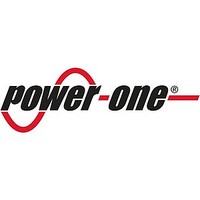F4804A-G POWER ONE, F4804A-G Datasheet - Page 16

F4804A-G
Manufacturer Part Number
F4804A-G
Description
Manufacturer
POWER ONE
Type
Filter Moduler
Datasheet
1.F4804A-G.pdf
(41 pages)
Specifications of F4804A-G
Operating Temperature Min Deg. C
-40C
Operating Temperature Max Deg. C
85C
Rad Hardened
No
Lead Free Status / RoHS Status
Compliant
F & FC Series DC-DC Converter Input Filters
FC Series, 0-100V, 5/10/20 Amps, TH Mount
Design Considerations
Switching Power Converter modules, because they are essentially constant efficiency over the input voltage range, must be
connected to a low AC impedance source of DC voltage.
A constant efficiency power module exhibits an input voltage versus current characteristic which electrically resembles a
negative resistor in the normal operating range of the module. Constant efficiency means that if the output power is held
constant, the input power will remain constant across the operating input voltage range. If the source voltage rises, the
current drawn from the source will fall, to maintain a constant product of voltage and current, hence, constant input power.
This characteristic is that of a negative resistor. When a negative resistance is fed from a positive source impedance which
has a greater magnitude than that of the negative resistance, either the system crashes or it becomes unstable. A good
general rule is that the magnitude of the source impedance must be lower than the magnitude of the input impedance of the
module, at all frequencies up to the switching frequency of the module. (The classic reference is Middlebrook and Cuk, “Input
Filter Considerations in Design and Application of Switching Regulators,” Advances in Switched-Mode Power Conversion, pp
91-107, TeslaCo, 1981.) This rule is especially important, and harder to follow, with higher power modules because the
magnitude of the negative input impedance is lower.
The normal solution is to place a low impedance capacitor directly across the input terminals of the module. 100 to 220 µF is
usually recommended for output power levels up to 300 Watts. This capacitor insures that the magnitude of the source
impedance is lower than that of the module input impedance. Note: this assumes that the DC source resistance is sufficiently
low; nothing can correct this problem. Too high a DC source resistance means that the necessary energy required by the
input of the module is not available, and this system will not work.
Use of the capacitor complicates the system design. There must be some consideration of the surge current required to
charge the capacitor when power is first applied. A surge limiting mechanism may be required. The capacitor may form a
resonant circuit with the inductance of an EMI filter. If this happens, the resonance will require damping. The capacitor must
be rated to handle all of the reflected ripple current of the module. Adding damping in the form of a resistor in series with the
capacitor may reduce the ripple current in the capacitor. A small value, high ripple current capacitor may then be required in
parallel with the damped electrolytic in order to meet the EMI requirements. The system designer must evaluate all of these
requirements and make the correct choices for the application.
Figure 1. Application of Input Filters
MCD10059 Rev. 1.1, 21-Jan-10
Page 16 of 41
www.power-one.com














